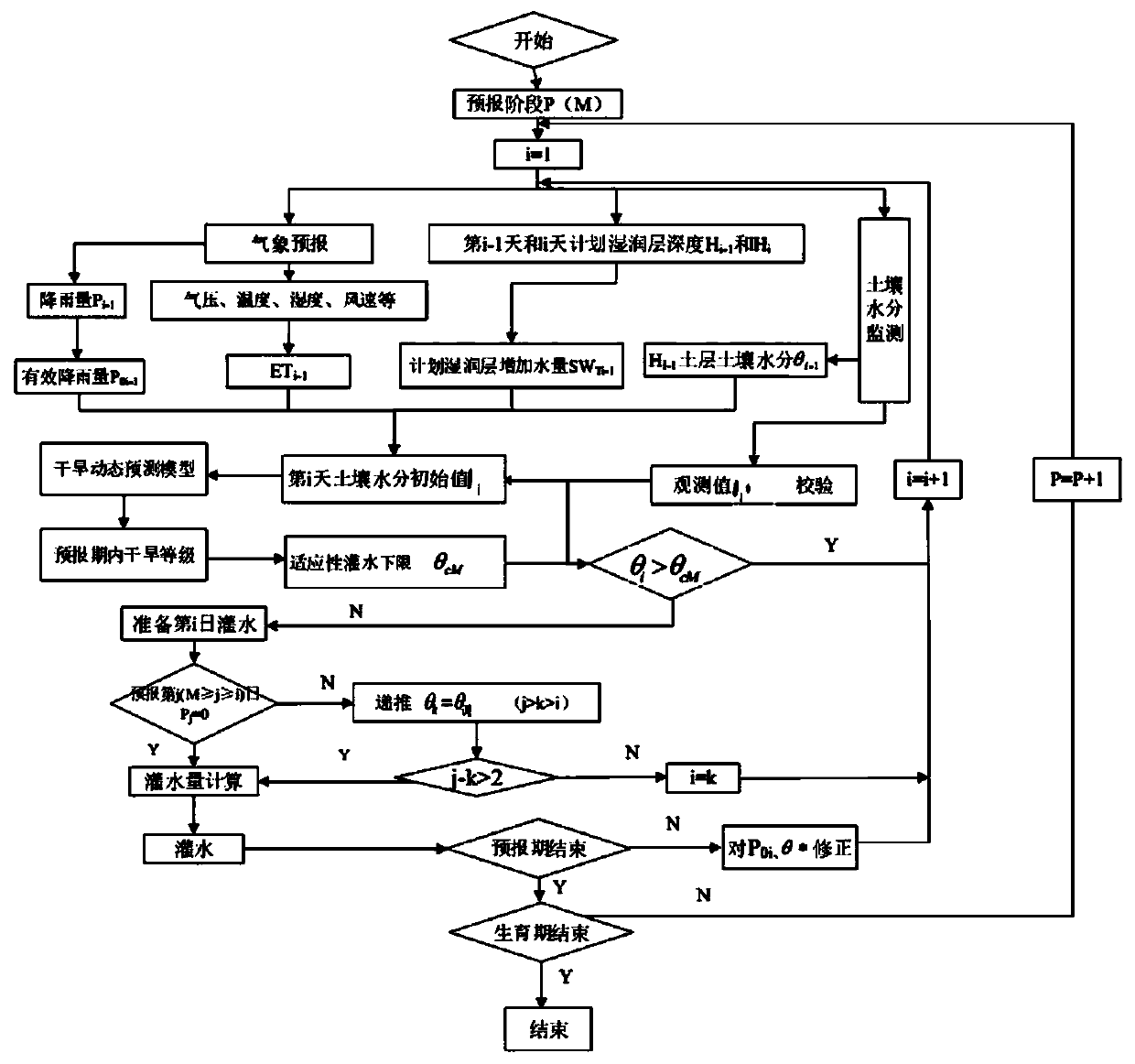Adaptive water-saving irrigation method based on dynamic drought prediction
An adaptive and arid technology, applied in forecasting, water saving, climate change adaptation, etc., can solve problems such as crop adaptation mechanism without considering different water stress, improve field water use efficiency, ensure national food security, reduce crop Effects of drought risk
- Summary
- Abstract
- Description
- Claims
- Application Information
AI Technical Summary
Problems solved by technology
Method used
Image
Examples
Embodiment 1
[0041] Embodiment 1: a kind of adaptive water-saving irrigation method based on dynamic drought prediction, comprises the following steps, and specific flow chart sees figure 1 shown.
[0042] Step 1: Establish an evaluation method for dynamic drought levels in irrigation districts based on the soil moisture content index; this method takes the average water content of the soil layer θ as the drought index, mainly through the soil water content SW of a certain soil layer depth, the thickness of the soil layer and soil bulk density ρ soil Calculation, the specific formula is: A number of drought classes of varying degrees of aridity are assigned between the driest and wettest values for a soil area.
[0043] Step 2: Build a real-time prediction model of soil moisture based on the principle of water balance; the real-time prediction model of soil moisture combined with short-term weather forecasts calculates the average moisture content θ of the soil layer on the i-th day....
Embodiment 2
[0072] Embodiment 2: An adaptive water-saving irrigation method based on dynamic drought prediction, including the following steps, see the specific flow chart figure 1 .
[0073] Step 1: Establish a method for evaluating dynamic drought levels in irrigated areas based on soil moisture content.
[0074] In this step, a dynamic drought level evaluation method is established based on the soil moisture content index. Among them, the average water content of the soil layer θ is used as the drought index, mainly through the soil water content SW of a certain soil layer depth, the thickness of the soil layer and soil bulk density ρ soil Calculation, the specific formula is:
[0075] Step 2: Build a real-time prediction model of soil moisture based on the principle of water balance.
[0076] In this step, the real-time prediction of soil moisture is mainly established based on the principle of water balance, ignoring groundwater recharge, and the precipitation P 0i , crop wat...
Embodiment 3
[0110] Embodiment 3: In Step 4 of Embodiment 1 or 2, the adaptive irrigation threshold is determined based on the crop water deficit compensation effect and according to the drought level within the forecast period. During certain development periods of crops, reducing soil moisture and inducing mild to severe water stress can prevent vigorous growth of plants, change the distribution of nutrients and water in plants, and transfer assimilates from vegetative organs to reproductive organs. When water stress is relieved Crops respond to changing water environments through changes in external morphology and adjustments in growth rate. Therefore, the soil moisture can be regulated through the appropriate upper and lower limits of irrigation, and the amount and frequency of irrigation can be reduced, thereby improving the water use efficiency of crops.
PUM
 Login to View More
Login to View More Abstract
Description
Claims
Application Information
 Login to View More
Login to View More - R&D
- Intellectual Property
- Life Sciences
- Materials
- Tech Scout
- Unparalleled Data Quality
- Higher Quality Content
- 60% Fewer Hallucinations
Browse by: Latest US Patents, China's latest patents, Technical Efficacy Thesaurus, Application Domain, Technology Topic, Popular Technical Reports.
© 2025 PatSnap. All rights reserved.Legal|Privacy policy|Modern Slavery Act Transparency Statement|Sitemap|About US| Contact US: help@patsnap.com



